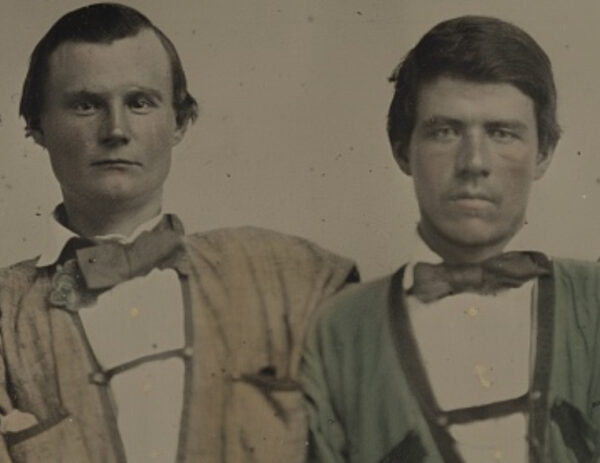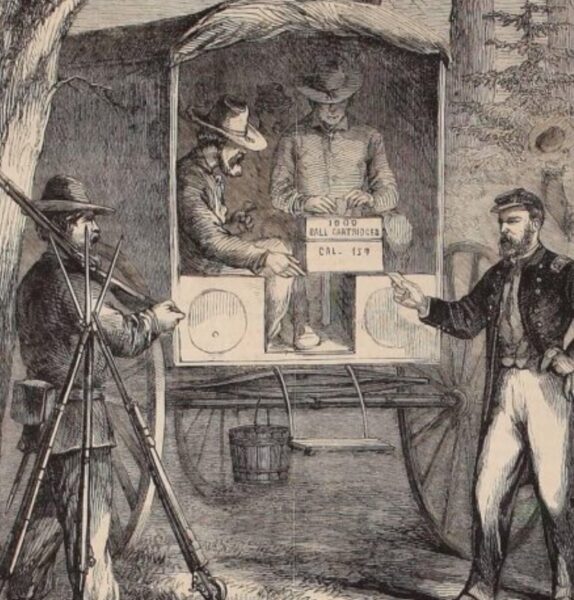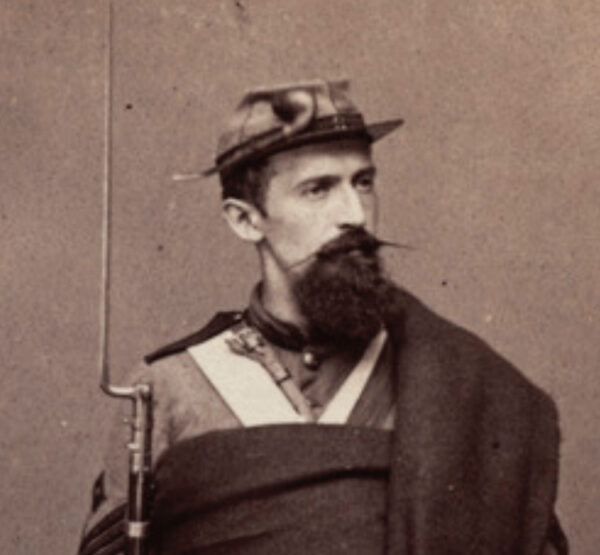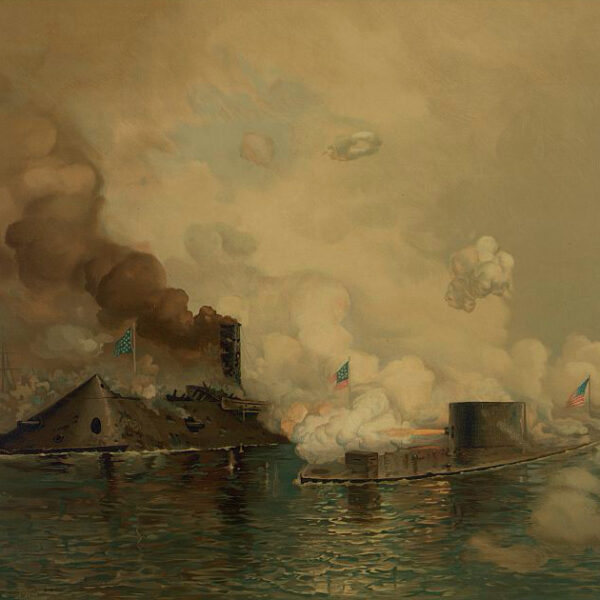In this second installment of our “Odd Civil War Photos” series, we highlight more strange and offbeat images made during the conflict. (View Part 1 here. All images are courtesy of the Library of Congress.)
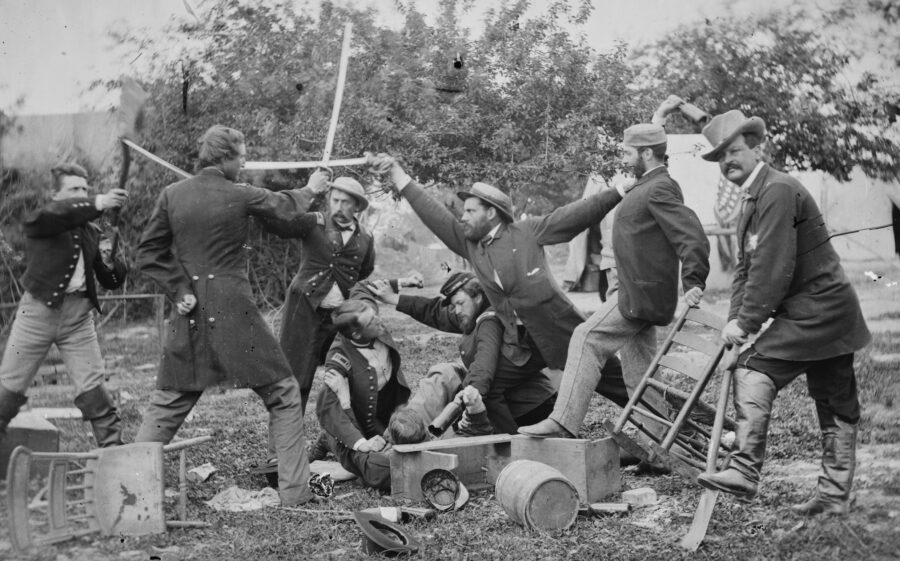
This April 1863 photo by James Gibson, titled “A Muss at Headquarters,” shows a group of Union officers engaged in a faux fight—in which swords, fists, bottles, and a shovel are employed—for the camera.
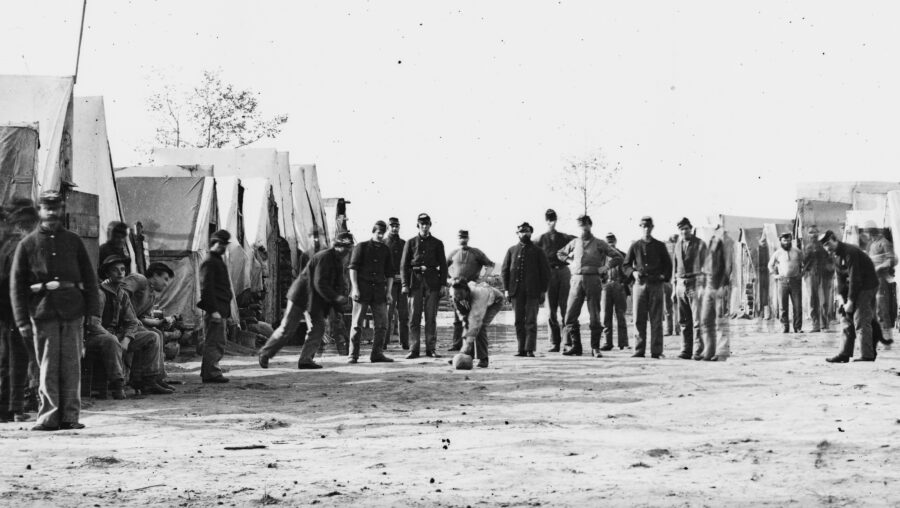
Soldiers of the 13th New York Heavy Artillery are shown “playing ball” in their camp at Petersburg, Virginia.

William and Philip J. Letsinger—brothers who served in of Company D of the 14th Indiana Infantry—strike an interesting (alert? surprised?) pose in front of a photographer’s painted backdrop of a Union army camp.
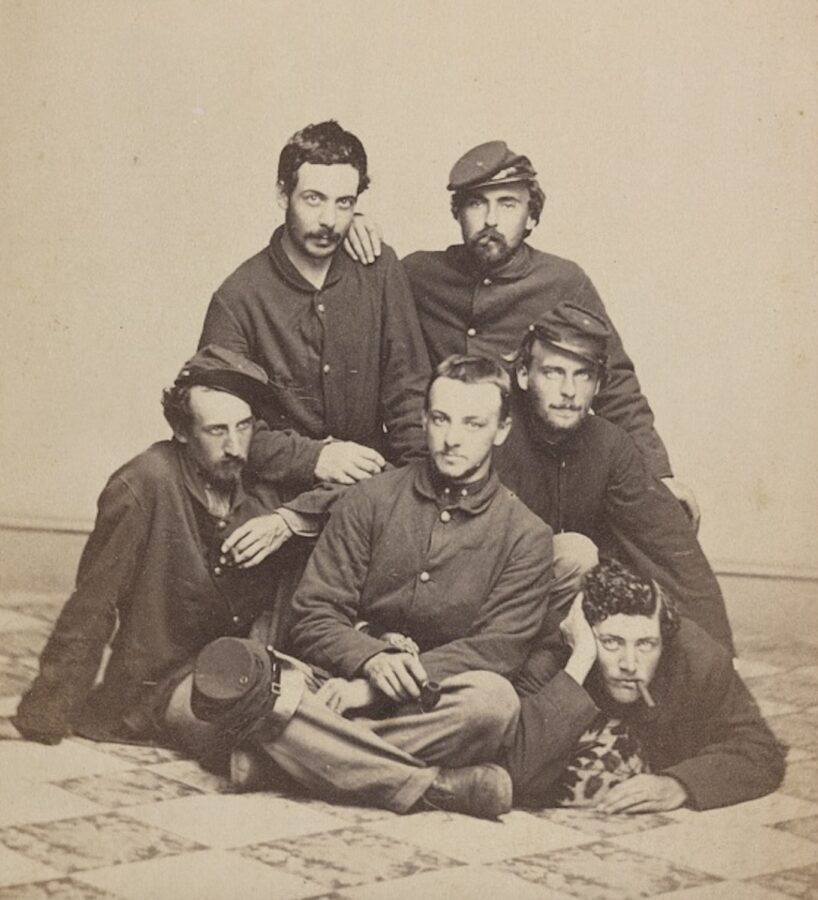
These Union army comrades traded their weapons for cigars and pipes—and assumed an interesting pyramid formation—when posing for the photographer’s camera.

Some civilians involved in the war effort were just as eager as soldiers to have their photos taken—such as this unknown draft officer who posed for the camera with the lottery box he used to pick the names of men selected for Union military service.

In this wartime image made in the New York studio of photographer W.J. Moulton, Sergeant William Straight of the 38th New York Infantry pretends to be passed out after drinking too much from a nearby bottle, while his friend, Corporal Lucius Stanley of the 107th New York Infantry, appears ready to attempt to rouse him from his stupor.
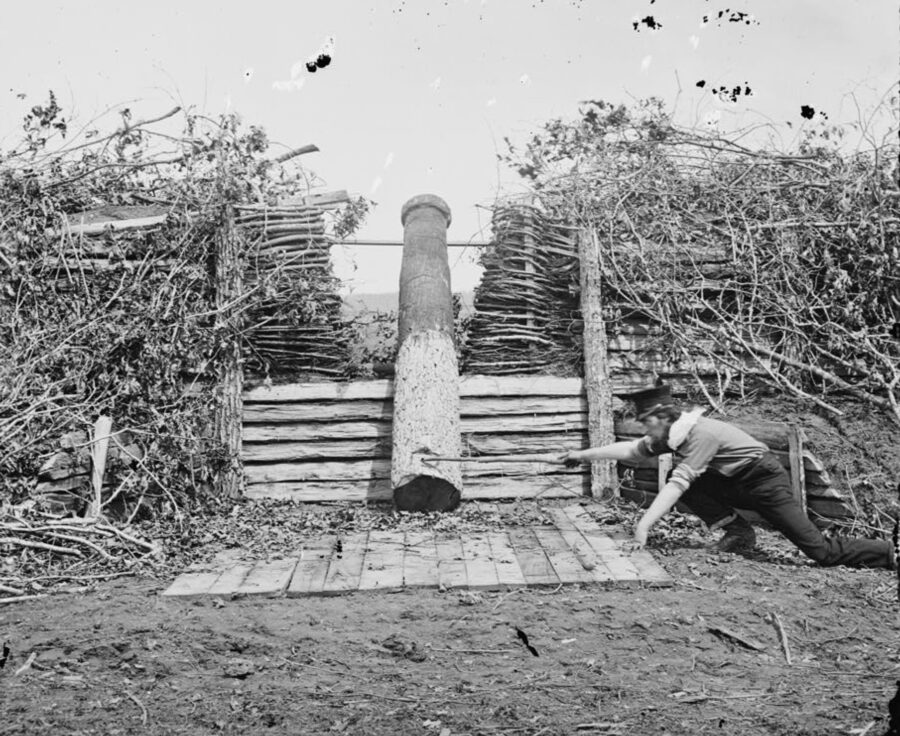
George Barnard took this photo of a man (possibly his assistant) pretending to fire a “Quaker gun”—a log sculpted and painted to look like a cannon at long distances—left behind in abandoned Confederate defenses at Centreville, Virginia, in March 1862. Such fake guns helped deceived Army of the Potomac commander George McClellan into believing he faced a larger, and better equipped, Confederate force during his Peninsula Campaign.

Charles Osgood, a private in the 16th New Hampshire Infantry, was fond enough of his army blanket to pose with it in this image he had taken during the war—surely something he sent home to family and friends.
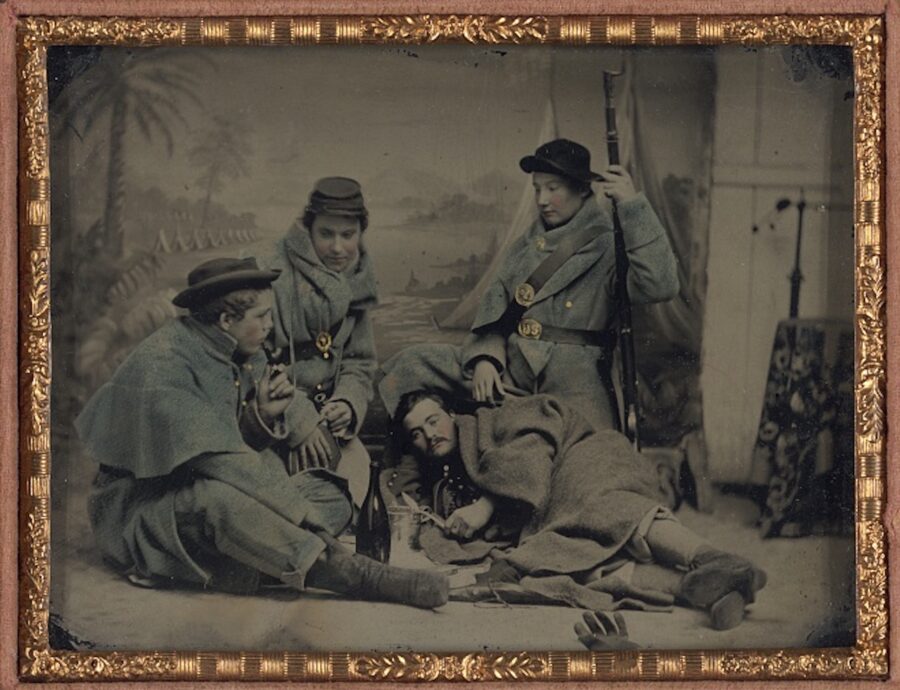
These Union soldiers didn’t pose with their blankets, but instead chose to don their winter overcoats in this image made sometime during the war. Note the hand at the bottom of the shot—to whom might it have belonged?

This posed scene—published by George Stacy and titled “The Soldier’s Return”—depicts an emotional (and fake) Union veteran being welcomed home by his wife and child. The acting most certainly could have been better.
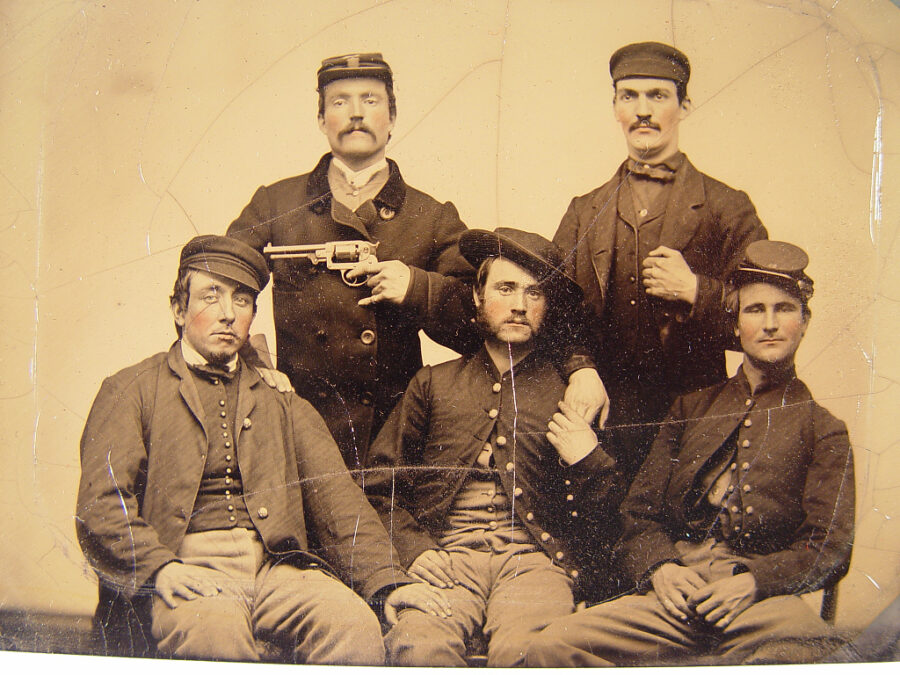
This photo of five seemingly close Union comrades contains a real head-scratching element: The man in the back row at left points a pistol at the head of the man in front of him. Let’s hope it wasn’t loaded.

